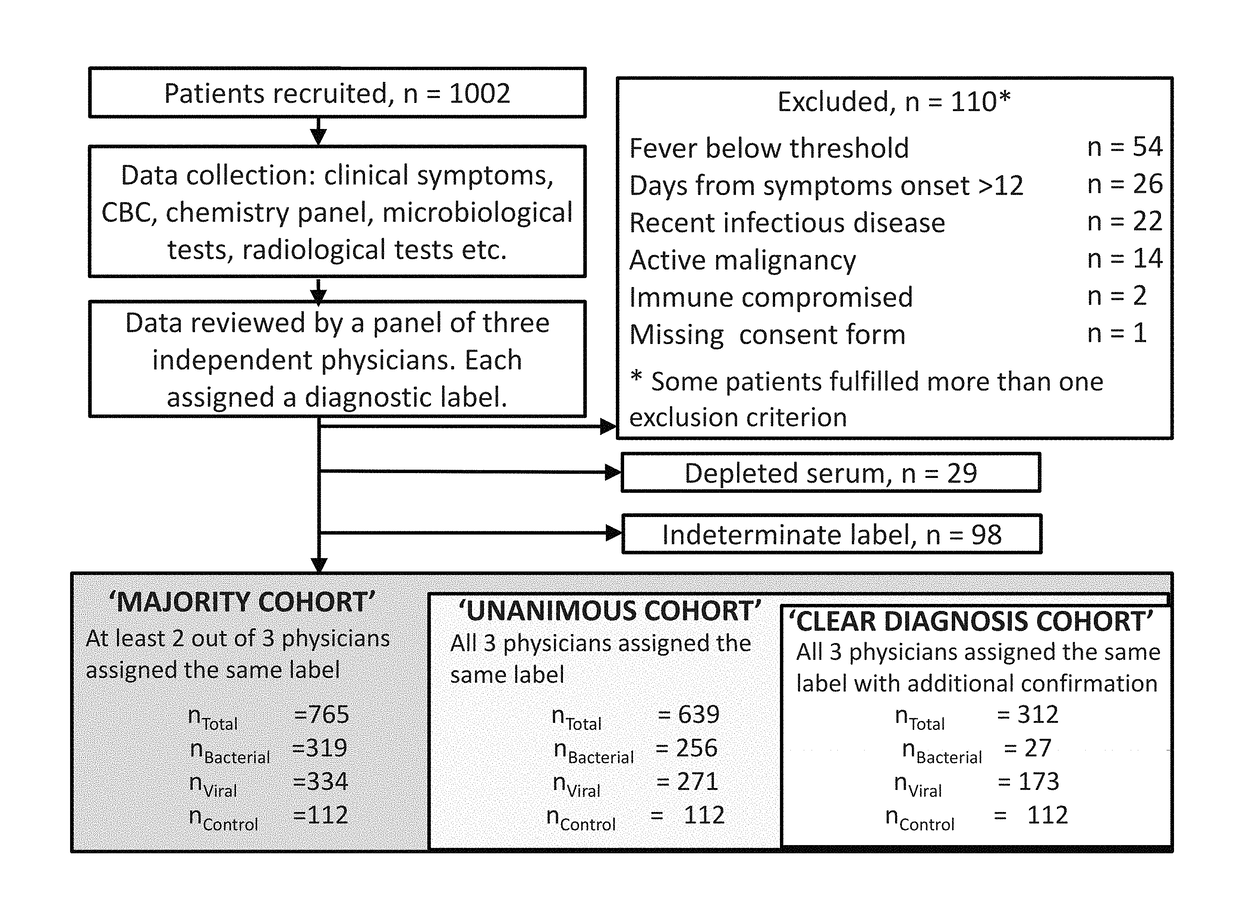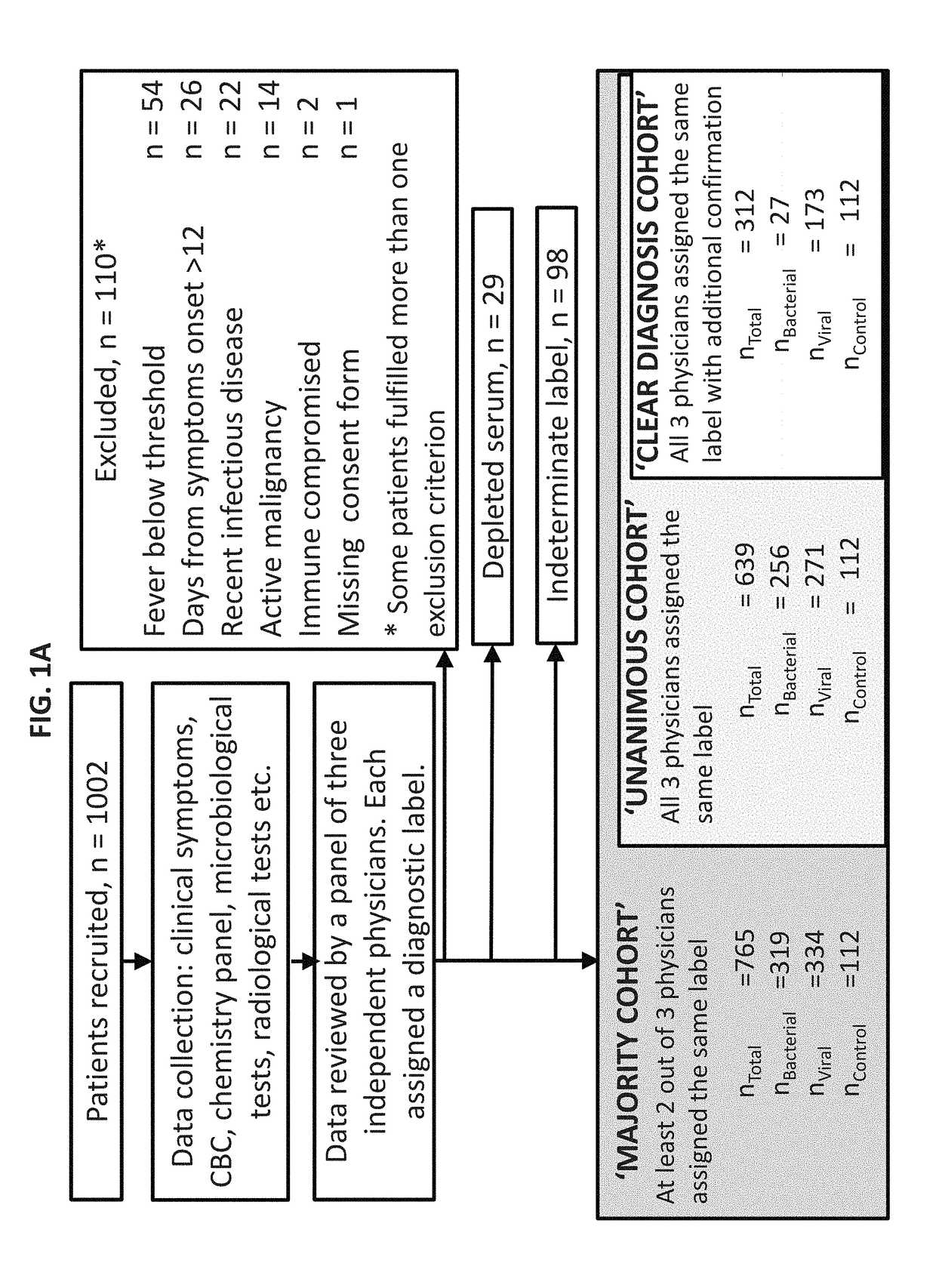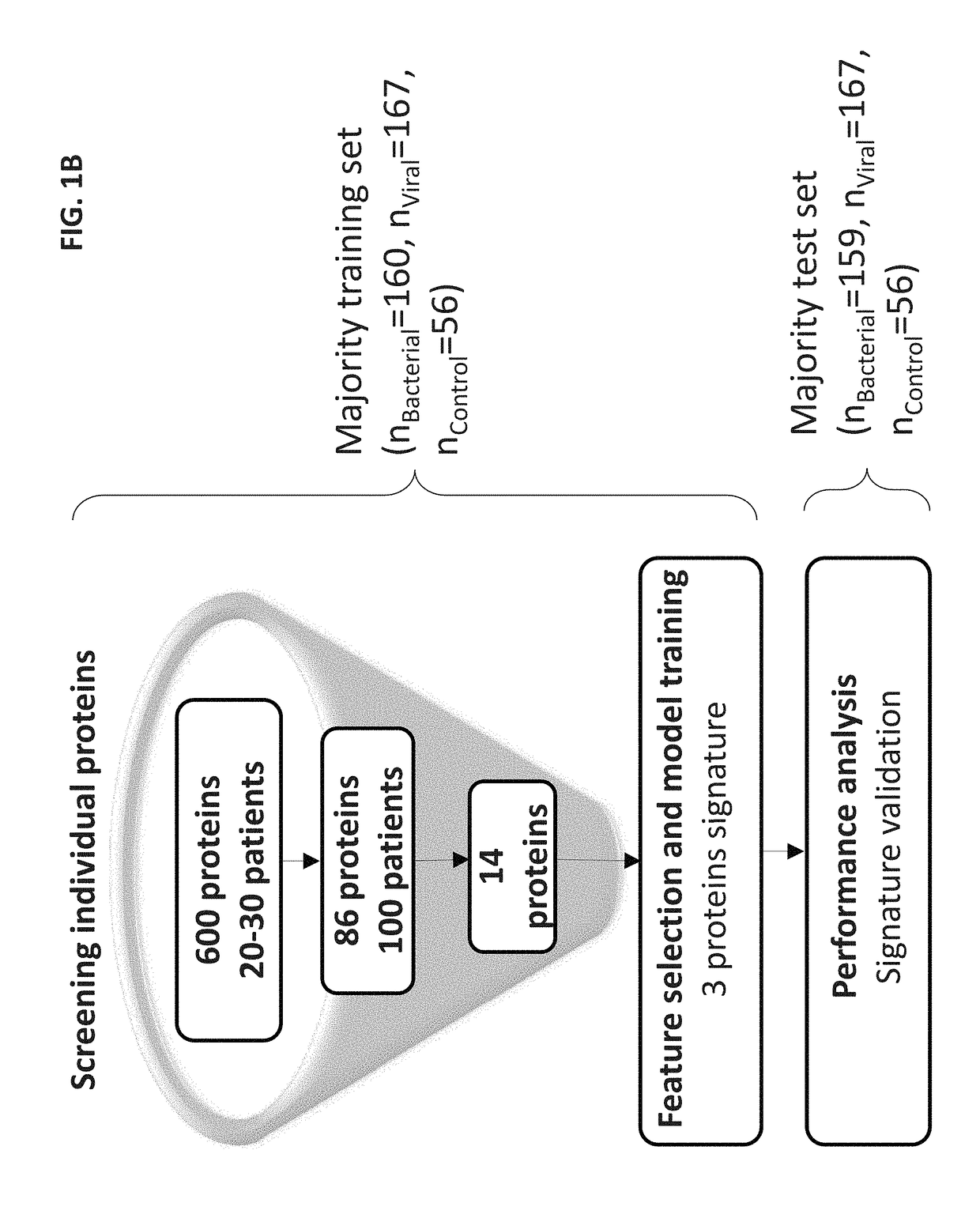Computational analysis of biological data using manifold and a hyperplane
a biological data and hyperplane technology, applied in the field of computational analysis, can solve the problems of prolonged hospitalization, ineffective abx, and reducing the quality of healthcar
- Summary
- Abstract
- Description
- Claims
- Application Information
AI Technical Summary
Benefits of technology
Problems solved by technology
Method used
Image
Examples
example 1
A Host-Proteome Signature for Distinguishing Between Bacterial and Viral Infections: a Prospective Multi-Center Observational Study
[0429]Methods
[0430]Study Population:
[0431]A total of 1002 patients took part in the study. Pediatric patients (≦18 years) were recruited from pediatric emergency departments (PED), pediatric wards and surgical departments, and adults (>18 years) from emergency departments (ED), internal medicine departments and surgical departments. Informed consent was obtained from each participant or legal guardian, as applicable. Inclusion criteria for the infectious disease cohort included: clinical suspicion of an acute infectious disease, peak fever >37.5° C. since symptoms onset, and duration of symptoms ≦12 days. Inclusion criteria for the control group included: clinical impression of a non-infectious disease (e.g. trauma, stroke and myocardial infarction), or healthy subjects. Exclusion criteria included: evidence of any episode of acute infectious disease in ...
example 2
A Host-Proteome Signature for Distinguishing Between Bacterial and Viral Infections: a Prospective Multi-Center Observational Study—Supplementary Material
[0473]Measures of Accuracy:
[0474]The signature integrates the levels of three protein biomarkers measured in a subject, and computes a numerical score that reflects the probability of a bacterial vs. viral infection. To quantify the diagnostic accuracy of the signature a cutoff on the score was used and the following measures were applied: Sensitivity, specificity, positive predictive value (PPV), negative predictive value (NPV), total accuracy, positive likelihood ratio (LR+), negative likelihood ratio (LR−), and diagnostic odds ratio (DOR). These measures are defined as follows:
Sensitivity=TPTP+FNSpecificity=TNTN+FPtotalaccuracy=TP+TNTP+FN+TN+FPPPV=TPTP+FP=sensitivity·prevalencesensitivity·prevalence+(1-specificity)·(1-prevalence)NPV=TNTN+FN=specificity·(1-prevalence)specificity·(1-prevalence)+(1-sensitivity)·(prevalence)LR+=Sens...
example 3
Trinary Classifier Outperforms a Binary Classifier
[0530]In the binary model the classifier is trained by classifying all samples as either ‘Bacterial’ or ‘Non-bacterial’ (‘Viral’ and ‘Non-infectious’ are grouped). In the trinary model, the classifier learns to distinguish between three classes ‘Bacterial’, ‘Viral’ and ‘Non-infectious’. The probability of the viral and the non-infectious are then grouped together to give the probability of ‘non-bacterial’. This was demonstrated on the present data.
[0531]Both of the above classifiers were evaluated using a leave 10%-out cross-validation on both the Majority and Unanimous cohorts.
[0532]Results
[0533]Running the binary classifier on the majority cohort yields the results as summarized in Table 10C, herein below:
TABLE 10CReference classViral andnon-Bacterialinfectious(B)(V + NI)63411V + NI25635B
[0534]The sensitivity of the classifier on the Majority cohort is 80.3% and the specificity is 92.2%.
[0535]Running the multinomial based classifie...
PUM
 Login to View More
Login to View More Abstract
Description
Claims
Application Information
 Login to View More
Login to View More - R&D
- Intellectual Property
- Life Sciences
- Materials
- Tech Scout
- Unparalleled Data Quality
- Higher Quality Content
- 60% Fewer Hallucinations
Browse by: Latest US Patents, China's latest patents, Technical Efficacy Thesaurus, Application Domain, Technology Topic, Popular Technical Reports.
© 2025 PatSnap. All rights reserved.Legal|Privacy policy|Modern Slavery Act Transparency Statement|Sitemap|About US| Contact US: help@patsnap.com



